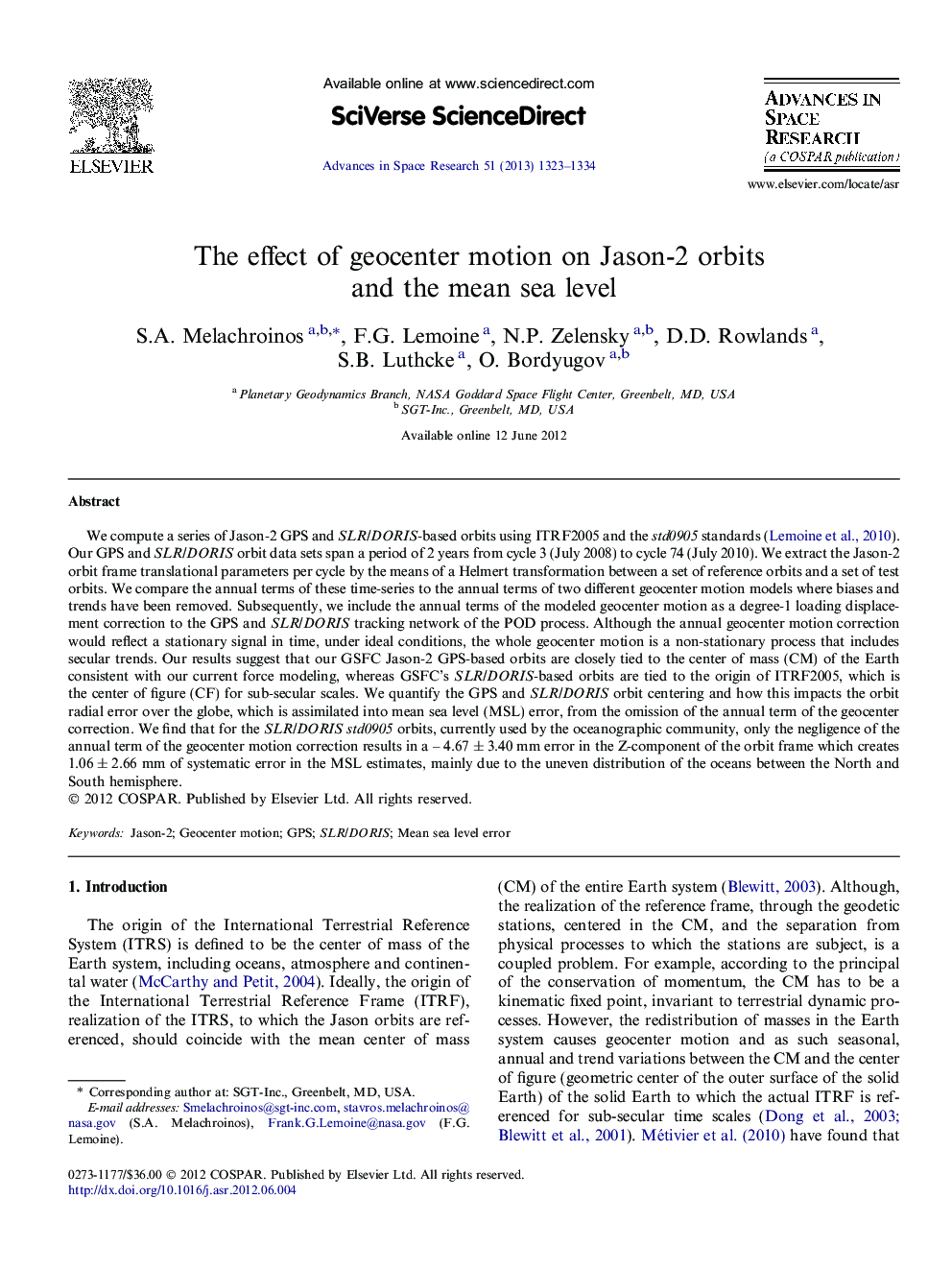| کد مقاله | کد نشریه | سال انتشار | مقاله انگلیسی | نسخه تمام متن |
|---|---|---|---|---|
| 1765476 | 1020103 | 2013 | 12 صفحه PDF | دانلود رایگان |

We compute a series of Jason-2 GPS and SLR/DORIS-based orbits using ITRF2005 and the std0905 standards ( Lemoine et al., 2010). Our GPS and SLR/DORIS orbit data sets span a period of 2 years from cycle 3 (July 2008) to cycle 74 (July 2010). We extract the Jason-2 orbit frame translational parameters per cycle by the means of a Helmert transformation between a set of reference orbits and a set of test orbits. We compare the annual terms of these time-series to the annual terms of two different geocenter motion models where biases and trends have been removed. Subsequently, we include the annual terms of the modeled geocenter motion as a degree-1 loading displacement correction to the GPS and SLR/DORIS tracking network of the POD process. Although the annual geocenter motion correction would reflect a stationary signal in time, under ideal conditions, the whole geocenter motion is a non-stationary process that includes secular trends. Our results suggest that our GSFC Jason-2 GPS-based orbits are closely tied to the center of mass (CM) of the Earth consistent with our current force modeling, whereas GSFC’s SLR/DORIS-based orbits are tied to the origin of ITRF2005, which is the center of figure (CF) for sub-secular scales. We quantify the GPS and SLR/DORIS orbit centering and how this impacts the orbit radial error over the globe, which is assimilated into mean sea level (MSL) error, from the omission of the annual term of the geocenter correction. We find that for the SLR/DORIS std0905 orbits, currently used by the oceanographic community, only the negligence of the annual term of the geocenter motion correction results in a – 4.67 ± 3.40 mm error in the Z-component of the orbit frame which creates 1.06 ± 2.66 mm of systematic error in the MSL estimates, mainly due to the uneven distribution of the oceans between the North and South hemisphere.
Journal: Advances in Space Research - Volume 51, Issue 8, 15 April 2013, Pages 1323–1334